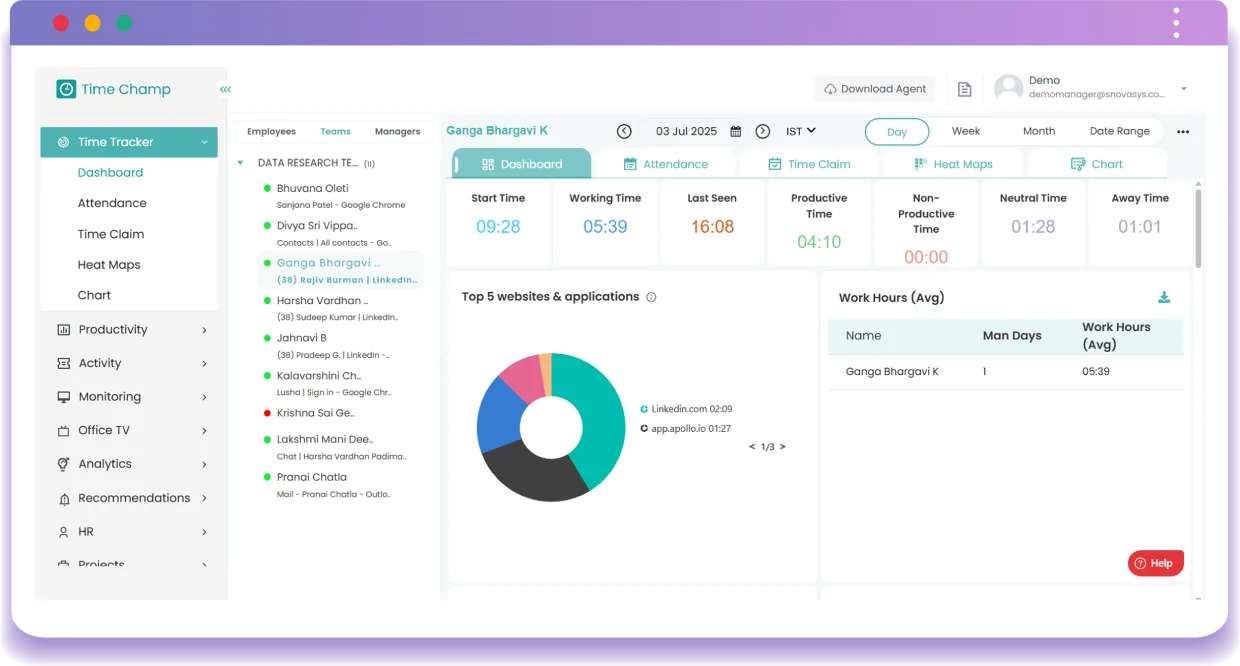The average salary in Australia is AUD 100,000 ($650600.00) per year, according to Australian Bureau of Statistics. Yet for many, that number doesn't reflect reality. Rising expenses and uneven pay are making it harder for your income to stretch as far as you think. This disconnect leaves workers frustrated and financially stressed. In this article, we uncover the truth behind the average, the factors shaping it, and how you can navigate the numbers with clarity.
What is the Average Salary in Australia?
The Australian Bureau of Statistics shows that wages and salaries paid by employers in March 2025 reached $104,805 million, continuing a gradual increase. This represents a 0.9% increase (or $971 million) from February 2025. Compared to March 2024, wages increased by 5.8%, which equals an additional $5,772 million over the year. It’s worth noting that salaries and income figures in Australia are reported in Australian dollars (AUD), the nation’s official currency.
1. Average Salary
The average salary in Australia is AUD 100,000 ($650600.00) per year for full-time workers. On the flip side, average annual earnings for part-time workers are AUD 67,554 ($43950.63). The average salary comes to about AUD 8,333 ($5421.45) per month or AUD 1,923 ($1251.10) per week. They clearly show the average income of full-time workers in various areas throughout the country.
2. Median Salary
The median salary in Australia is AUD 90,000 ($58554.00) per year. Half of all full-time employees make less than the median, and half make more. Because of its ability to overlook skewed values, the median is more commonly used than the mean as an average income.
3. Minimum Wage
The Fair Work Commission is likely to raise Australia’s minimum wage from July 1, 2025, as part of its yearly wage review. At present, the minimum wage is $24.10 per hour or $915.90 for a standard 38-hour workweek (pre-tax). According to the early estimates, the rate could go up to around $25.20 per hour or $980.00 weekly, but it will need formal verification.
As well as earning their normal pay, casual employees also receive an extra 25% offending for not having paid time off. The estimate is that casual hourly rates will end at about $31.50 an hour by 2025. The adjustments are made as Australia works to ensure workers are paid properly and can afford to buy goods and services at prices that are increasing.
4. Average Salary Increment Rate
According to Michelle Marquardt, Head of Prices Statistics at the Australian Bureau of Statistics (ABS), annual wage growth saw an upward shift for the first time since the June quarter of 2024. Wage growth reached 3.4% in the year to March 2025, a modest increase over the December quarter’s 3.2%, but still below last year’s 4.0% rise for the same period. Prices show that wage growth has gone up a little, but it is not at the same high levels as it was before.
In the same period, private sector wage growth remained steady at 3.3%, showing no change from the December quarter. Public sector earnings climbed more noticeably, reaching 3.6% after rising from 2.9%.
What are the Factors Influencing Salaries in Australia?
There are several things that affect why income levels are not the same across the country. It’s not just one thing that sets the salary in Australia. It usually comes down to a mix— job, background, and even location. Take a look at what impacts average earnings across diverse roles and locations nationwide.
1. By Education
There’s a strong pattern in Australia: those with advanced qualifications generally see better-paying job opportunities. Having an advanced qualification often helps you get a higher income, demonstrating how useful expert knowledge is to companies.
2. By Experience
Gaining experience at work makes it easier to earn more. Workers with more than five years of experience may earn as much as 36% more than those newer to the workforce. It goes to show that growing in a field and staying in the industry for the long haul can lead to better pay than the national average.
| Experience Level | Salary Increase |
|---|---|
| 0-5 years | Base salary |
| 5+ years | Up to 36% more |
Source : Talent.com
3.By Age
Employees in Australia will often see their salaries rise with their years of work and age. Usually, as people move along in their jobs, they earn more money, with the highest pay coming in the middle of their careers. After that, things tend to slow down or even dip a bit as they get closer to retirement. The breakdown for average annual earnings by age group in 2025 is detailed in the table below:
| Age Group | Average Annual Salary (AUD) | Average Annual Salary (USD) |
|---|---|---|
| 20–24 | 55,000 – 65,000 | 35783-42289 |
| 25–34 | 70,000 – 85,000 | 45542-55301 |
| 35–44 | 85,000 – 100,000 | 55301-65060 |
| 45–54 | 90,000 – 110,000 | 58554-71566 |
| 55–64 | 85,000 – 105,000 | 55301-68313 |
| 65+ | 70,000 – 85,000 | 45542-55301 |
Source : ABS.gov
4.By Gender
Australian women earn 21.8% less than men when it comes to total pay. That’s the same as earning just 78 cents to a man’s dollar or falling short by $28,425 each year. The gap in base salary alone is 16.7%. At the employer level, around 72% of organizations have a gender pay gap that favors men, while 21.3% show a neutral gap (within ±5%), and only 6.5% report a gap favoring women.
There has been a slight improvement over time, with the median employer gender pay gap decreasing from 9.1% in 2022–23 to 8.9% in 2023–24. Even so, there are still differences in the way industries treat workers. Construction has a big difference between men and women, with a gap of 26.3%, but accommodation and food services report a lower gap of just 2%.
5.By Industry
Pay rates differ around Australia depending on the industry, and that’s usually because of what skills are in demand and how the economy is doing. As of 2025, the average monthly earnings in Australia in all sectors were varied, allowing us to picture the general salary trends in Australia.
| Industry | Average Monthly Salary (AUD) | Average Monthly Salary (USD) |
|---|---|---|
| Healthcare & Medical | 9,500 | 6180 |
| Information Technology | 10,000 | 6506 |
| Construction & Building | 8,800 | 5725.28 |
| Education & Training | 7,200 | 4684.32 |
| Finance & Banking | 9,200 | 5985.52 |
| Hospitality & Tourism | 5,800 | 3773.48 |
| Retail & Customer Service | 5,200 | 3383.12 |
| Mining & Energy | 11,500 | 7481.90 |
Source : ABS.gov
6. By Location
I. By State
Paychecks often look different across Australia, mostly because some spots cost more to live in and require different kinds of skills. Average weekly earnings of Australia by state and territory are:
| State/Territory | Average Weekly Earnings (USD) | Male Weekly Earnings (USD) | Female Weekly Earnings (USD) |
|---|---|---|---|
| New South Wales | 1259.37 | 1309.66 | 1180.77 |
| Victoria | 1224.43 | 1276.93 | 1143.36 |
| Queensland | 1236.79 | 1302.57 | 1138.94 |
| South Australia | 1156.05 | 1199.19 | 1081.43 |
| Western Australia | 1362.55 | 1468.79 | 1183.90 |
| Tasmania | 1113.05 | 1133.08 | 1076.55 |
| Northern Territory | 1200.88 | 1285.78 | 1113.89 |
| Australian Capital Territory | 1383.50 | 1441.27 | 1318.96 |
Source : ABS.gov
II. By City
Different cities in Australia pay an average wage that varies according to what people need to earn and what jobs are available. The table below lists the average annual earnings for people living in the top Australian cities in 2025:
| City | Average Annual Salary (AUD) | Average Annual Salary (USD) |
|---|---|---|
| Canberra | 80,000 | 52,048 |
| Perth | 80,000 | 52,048 |
| Sydney | 82,000 | 53,349.20 |
| Melbourne | 78,000 | 50,746.80 |
| Brisbane | 76,000 | 49,445.60 |
| Darwin | 74,000 | 48,144.40 |
| Adelaide | 72,000 | 46,483.20 |
| Hobart | 67,000 | 43,590.20 |
Source : Upgrad.com
What are the Highest Paying Jobs in Australia?
The most well-paid jobs in healthcare, technology, finance, and engineering are presented here:
| Industry & Role | Average Annual Salary (AUD) | Average Annual Salary (USD) |
|---|---|---|
| Neurosurgeon | 604,582 | 393,341.05 |
| Anaesthetist | 426,894 | 277,737.24 |
| Internal Medicine Specialist | 334,267 | 217,474.11 |
| Psychiatrist | 270,412 | 175,930.05 |
| Legal: Equity Partner | 850,000 | 553,010.00 |
| Executive: CEO/Managing Director | 700,000 | 455,420.00 |
| Finance: Head of Treasury | 510,000 | 331,806.00 |
| Logistics: Chief Procurement Officer | 450,000 | 292,770.00 |
| Human Resources: Head of HR | 400,000 | 260,240.00 |
| Property: Development Director | 388,000 | 252,432.80 |
| Sustainability: Project Development Director | 357,000 | 232,264.20 |
| Mining: Jumbo Operator | 330,000 | 214,698.00 |
| Construction: Construction Manager | 320,000 | 208192.00 |
| Technology: Project Director | 280,000 | 182168.00 |
Source : Forbes
What are the Top Industries to Watch in Australia Today?
1. Renewable Energy & Sustainability
Australia is moving forward toward sustainability, as almost 40% of its electricity comes from renewable sources. According to the government, the "Future Made in Australia" initiative supports growth in renewable hydrogen, processing of critical minerals, green metals, low-carbon liquid fuels, and clean energy manufacturing. Next DC and similar companies are focusing on green energy, which proves the data center industry is expanding.
2. Healthcare & Social Assistance
A growing demand and an aging public cause the healthcare sector to constantly expand. The National Disability Insurance Scheme (NDIS), which supports 640,000 people, including aged and disability care services, is now expanding across Australia. Telehealth and mental health support among health and wellness services is rapidly becoming more important.
3. Information Technology & Artificial Intelligence
AI and automation aren’t just buzzwords; they are bringing real change to industries now. Australian industries, from hospitals to warehouses to farms, are using AI to deal with tough problems and boost day-to-day performance. Many entrepreneurs join this field because it quickly changes and allows them to invest in ideas that can shape the future.
4. Construction & Infrastructure
Government investments in infrastructure are helping Australia's construction sector continue to improve. In spite of labor difficulties and material cost increases, the industry is still set to see growth of 6.8% by November 2025, including work on residential, commercial, and civil projects. According to estimates, the market will be valued at $180.90 billion in 2025 and should grow to $230.89 billion by 2030, at a rate of 5% each year over the forecast period.
5. E-Commerce & Online Retail
The e-commerce sector is thriving; people are shopping online more because of both new trends and improved technology. Many companies are using the internet to sell products, responding to a greater need for easy shopping and effective shipping.
6. Agricultural Technology (AgTech)
New advances in AgTech are helping to reform Australia’s farming methods. Stacked Farm and other firms are at the forefront of creating automated vertical farming, which helps produce food in an efficient and sustainable way. Advances in agriculture help face problems like not having enough water and wanting to grow crops in every season.
7. Education & Online Learning
Online learning and job training play a bigger role in the current state of education. There’s a growing emphasis on equipping students with skills relevant to emerging industries, including AI and digital technologies.
The Government will invest over four years, starting in 2024–25:
- $55.6 million for the new Building Women’s Careers program, aimed at driving long-term structural and cultural change in workplaces and training environments.
- An additional $10.6 million to support the rollout of the Australian Skills Guarantee, helping to train the next generation of skilled workers.
- In 2024–25, $4.4 million will be used to raise awareness of free TAFE courses in the main skill areas and promote the benefits of vocational education, hoping more people will begin VET pathways.
What is the Cost of Living in Australia?
There are many factors affecting Australia’s cost of living in 2025, like, difficulties with housing, inflation, and diversity in costs among regions. A recent cash rate cut of 3.85% by the Reserve Bank of Australia is meant to ease some part of the financial burden on Australians, but many people are still dealing with increased living costs.
| Expense Category | Average Monthly Cost (AUD) | Average Monthly Cost (USD) |
|---|---|---|
| Housing Costs | ||
| 1-Bedroom Apartment (City Centre) | 2,125.23 | 1382.67 |
| 1-Bedroom Apartment (Outside City Centre) | 1,684.45 | 1095.90 |
| 3-Bedroom Apartment (City Centre) | 3,595.06 | 2338.95 |
| 3-Bedroom Apartment (Outside City Centre) | 2,664.90 | 1733.78 |
| Utilities and Energy | ||
| Basic Utilities (Electricity, Heating, Cooling, Water, Garbage) | 270.71 | 176.12 |
| Internet (Unlimited, 60 Mbps or More) | 81.56 | 53.06 |
| Food and Groceries | ||
| Meal at Inexpensive Restaurant | 25.00 | 16.27 |
| Meal for Two at Mid-range Restaurant | 120.00 | 78.07 |
| Monthly Grocery Estimate (Single Person) | 500.00 - 600.00 | 325.30 - 390.36 |
| Monthly Grocery Estimate (Family of Four) | 1,450.00 - 2,180.00 | 943.37 - 1418.31 |
| Transportation | ||
| Public Transportation | 1,450.00 - 2,180.00 | 943.37 - 1418.31 |
| Monthly Public Transport Pass | 150.00 | 97.59 |
| One-way Local Transport Ticket | 4.50 | 2.93 |
| Gasoline (per liter) | 2.00 | 1.30 |
| Childcare and Education | ||
| Preschool (Private, Monthly) | 2,413.32 | 1570.11 |
| International Primary School (Annual) | 19,036.88 | 12385.39 |
| Miscellaneous | ||
| Fitness Club Membership (Monthly) | 73.08 | 47.55 |
| Cinema Ticket (1 Seat) | 22.00 | 14.31 |
| Overall Monthly Estimates | ||
| Single Person (Excl. Rent) | 1,613.90 | 1050.00 |
| Family of Four (Excl. Rent) | 5,730.80 | 3728.46 |
Source : Numbeo
How Can Time Champ Make Outsourcing Smoother and Smarter?
Managing outsourcing teams can feel like a balancing act, especially when working across time zones, communication styles, and productivity expectations. Time Champ is designed to eliminate this complexity through a set of features that are designed to add structure, clarity, and visibility to distributed teams. Are you a manager of a remote development team or an international customer support team? Time Champ will provide you with the confidence to lead your team.

1. Automatic Time Tracking
Get rid of manual timesheets and estimations. Time Champ automatically records the time spent on activities and is fully accurate when used to bill a client, calculate payroll, or during performance analysis. Not only does it establish a sense of trust with the clients, but it also allows your staff to concentrate on the job instead of keeping track of their own time. This uniformity is largely important in outsourced scenarios where transparency is of the utmost importance.
2. Project-Based Tracking
Keep outsourced projects on track from start to finish. Time Champ also allows you to perform tracking at a project level, and thus, you can subdivide work into particular tasks, allocate responsibilities, and track timelines. You can visibly track the progress of each project and identify delays before it is too late, as well as see that milestones are being hit without back-and-forth or confusion.
3. Smart Task Scheduling
Working across different regions? No problem. Using Time Champ, you can schedule tasks based on the differences in time zones, availability of resources, as well as the priority of tasks. This feature allows for efficient handoffs amongst teams, does not allow scheduling overlaps, and guarantees full-time work on your projects, with no deadlines being missed and no overlaps.
4. Detailed Reports & Analytics
Make every decision count with rich, easy-to-understand analytics. Whether it is a daily productivity report or a project summary, Time Champ provides you with information about performance, time utilization, and engagement levels. These reports help you identify high-performers, flag underutilized resources, and drive continuous improvement across your outsourced operations.
Conclusion
Understanding the average salary in Australia offers valuable insight for anyone planning to work, hire, or relocate there. Not only does it indicate the economic well-being of the nation, but it also shows the disparity of earnings in terms of industries, roles, and regions. Whether you're evaluating a job offer or benchmarking salaries, staying informed helps you make smarter financial and career decisions. With continuous shifts in the job market, keeping an eye on salary trends is more important than ever.
Frequently Asked Questions
A salary of $75,000 is close to the median in Australia. While it may provide a comfortable living in regional areas, it can be challenging in cities like Sydney or Melbourne due to the higher cost of living. Your quality of life will depend on where you live and your personal expenses.
The average hourly wage in Australia is around $40 as of April 2025. That’s roughly equal to an average yearly salary of $100,000 for full-time roles. The median hourly wage is also around $40 per hour.
While the average salary in Australia is above AUD 100,000, perceptions of what constitutes a good salary have shifted. Surveys performed in Australia point out that most people now expect a minimum income of AUD 152,775, a sign of higher expectations and inflation.
A Finder survey of 1,012 Australians found that the "good" salary is now seen as $152,775, but $164,577 is considered necessary to live comfortably, depending on age and location.
Yes, the cost of living in Australia is considered high. As an example, a person living alone should expect to spend about AUD 1,613.90 each month, not including rent. When rent is left out, a family of four should expect to spend AUD 5,730.80 monthly.








